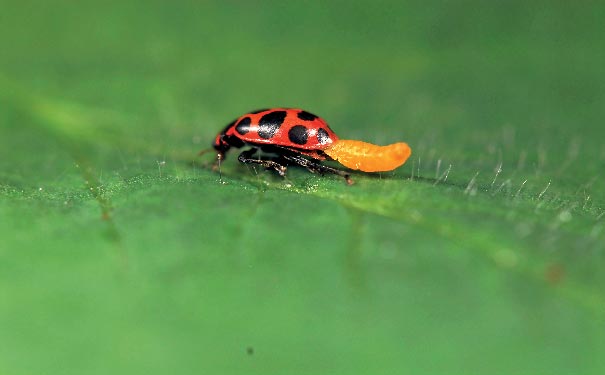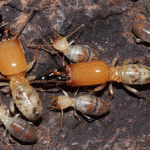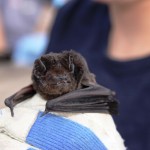
The wasp larva breaks out of the ladybug after having fed on it and been protected by its body. Image: Frederic Thomas
Parasites may generate zombie-like ants and ladybirds.
Scientists at the University of Montreal have discovered a type of larva that turns ladybird beetles into zombie-like creatures, using them for food and shelter in the process. The larvae of the Dinocampus coccinellae parasitic wasp colonise and consume the ladybirds while they are still alive, the scientists observed.
The larva is laid as an egg in the soft interior of the ladybird, where it can grow without being disturbed by its natural predators. After some 20 days, the larva breaks out of its host’s body and spins a cocoon between the beetle’s legs. This nearly paralyses the ladybird so that it can barely move and has no choice but to protect the pupa-stage wasp with its body. The larva continues to feed on the ladybird. The larva benefits from its host’s life up to the very last minute: the living ladybird occasionally jerks, which is likely enough movement to keep the larva’s enemies at bay.
When the larva is ready to leave the pupa, it releases its host, which — to the scientists surprise — sometimes has sufficient energy to resume its pre-occupation life; this phenomenon was observed in 25 per cent of cases.
But this isn’t the only known ‘zombification’ process.

A dead carpenter ant attached to a leaf. Image: David Hughes
The Cordyceps fungi has decimated entire ant colonies. The parasite grows inside the ant and feeds off its internal organs, causing, among other things, convulsions. When the parasite is ready to reproduce, it devours the ant’s brain. The death host will then release the spores, which will find ‘shelter’ in other ants.
“The fungus attacks the ants on two fronts: first by using the ant as a walking food source, and second by damaging muscle and the ant’s central nervous system,” said David P. Hughes, assistant professor of entomology and biology at Penn State. “The result for the ant is zombie walking and the death bite, which place the ant in the cool, damp understory. Together these events provide the perfect environment for fungal growth and reproduction.”
The researchers revealed that there is a second attacker, a white fungus that munches on both the death and the zombie spores. Is this a third zombification agent? “In a case where biology is stranger than fiction, the parasite of the zombie-ant fungus is itself a fungus — a hyperparasitic fungus that specialises in attacking the parasite that turns the ants into zombies.”
In the paper recently published in PLoS ONE, the authors suggest that the infection spread by the zombie-ant fungus does not infect as many healthy ants as previously thought. “Interestingly, beyond the well known effect of defensive ant behaviour, our new research reveals the added effect of the castrating actions of the hyperparasite fungi, which may result in significantly limiting the spread of the zombie-ant fungus,” said Hughes.
Source: Penn State






